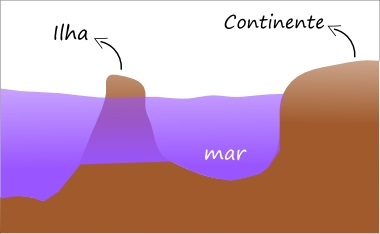There are several explanations for the emergence of the Earth, this has always been part of man's curiosity throughout history, whether in the past or even in the present. Many were the explanations given. Therefore, the ancient Chinese, through their mythology, elaborated what they believed to be the Universe and planet Earth. Within Chinese mythology the Universe is explained with an egg positioned vertically.
The sky was like a concave bowl that corresponds to the inner surface of the shell. The Earth, description given by the Chinese, was similar to an egg yolk, which moves over the primitive ocean, which completed the part found under the shell.
In the center of the egg inhabited Pan-Ku, this was a giant that over eighteen thousand years increased its size daily by many meters. As Pan-Ku grew, the eggshell broke and broke, pulling the sky away from Earth, until it took Pan-Ku to death.
Pan-Ku's head turned into a great sacred mountain, the eyes gave rise to the sun and also the moon, and the giant's hair became trees.
Do not stop now... There's more after the advertising ;)
Eduardo de Freitas
Graduated in Geography
Would you like to reference this text in a school or academic work? Look:
FREITAS, Eduardo de. "Earth Formation according to the Chinese"; Brazil School. Available in: https://brasilescola.uol.com.br/geografia/formacao-terra-segundo-os-chineses.htm. Accessed on July 27, 2021.


